Myths about teaching can hold you back


- Year 10•
- Higher
Checking and securing understanding of reflection
I can describe a reflection and perform a given reflection on an object.


- Year 10•
- Higher
Checking and securing understanding of reflection
I can describe a reflection and perform a given reflection on an object.
These resources will be removed by end of Summer Term 2025.
Switch to our new teaching resources now - designed by teachers and leading subject experts, and tested in classrooms.
These resources were created for remote use during the pandemic and are not designed for classroom teaching.
Lesson details
Key learning points
- The line of reflection can be vertical/horizontal/diagonal.
- The line of reflection may go through part of the object.
- The line of reflection may not touch the object.
- To reflect, you need a line to reflect in.
Keywords
Transformation - A transformation is a process that may change the size, orientation or position of a shape.
Reflection - A reflection of a shape is the mirror image of the shape. An object is reflected when it is flipped over a fixed line (line of reflection), without the image being turned or its size changing.
Line of reflection - The line of reflection is the fixed line about which an object is reflected. The object and image are equidistant from the line of reflection.
Object - The object is the starting figure, before a transformation has been applied.
Image - The image is the resulting figure, after a transformation has been applied.
Common misconception
Pupils may find reflecting across a diagonal line more challenging than vertically or horizontally.
Pupils may find it easier with tracing paper, or rotating their book/paper so the line of reflection is vertical.
To help you plan your year 10 maths lesson on: Checking and securing understanding of reflection, download all teaching resources for free and adapt to suit your pupils' needs...
To help you plan your year 10 maths lesson on: Checking and securing understanding of reflection, download all teaching resources for free and adapt to suit your pupils' needs.
The starter quiz will activate and check your pupils' prior knowledge, with versions available both with and without answers in PDF format.
We use learning cycles to break down learning into key concepts or ideas linked to the learning outcome. Each learning cycle features explanations with checks for understanding and practice tasks with feedback. All of this is found in our slide decks, ready for you to download and edit. The practice tasks are also available as printable worksheets and some lessons have additional materials with extra material you might need for teaching the lesson.
The assessment exit quiz will test your pupils' understanding of the key learning points.
Our video is a tool for planning, showing how other teachers might teach the lesson, offering helpful tips, modelled explanations and inspiration for your own delivery in the classroom. Plus, you can set it as homework or revision for pupils and keep their learning on track by sharing an online pupil version of this lesson.
Explore more key stage 4 maths lessons from the Further transformations unit, dive into the full secondary maths curriculum, or learn more about lesson planning.

Equipment
Tracing paper
Licence
Prior knowledge starter quiz
6 Questions
Q1.A translation is a in which every point of a shape moves the same distance in the same direction.
Q2.Match each description to the correct vector.
4 left and 5 down -
$$\begin{pmatrix} -4 \\ -5 \\ \end{pmatrix}$$
4 right and 5 up -
$$\begin{pmatrix} 4 \\ 5 \\ \end{pmatrix}$$
5 left and 4 up -
$$\begin{pmatrix} -5 \\ 4 \\ \end{pmatrix}$$
5 right and 4 down -
$$\begin{pmatrix} 5 \\ -4 \\ \end{pmatrix}$$
4 left and 5 up -
$$\begin{pmatrix} -4 \\ 5 \\ \end{pmatrix}$$
5 right and 4 up -
$$\begin{pmatrix} 5 \\ 4 \\ \end{pmatrix}$$
Q3.The point P(4, 3) is translated by the vector $$\begin{pmatrix} -2 \\ 1 \\ \end{pmatrix}$$ to P'. What are the coordinates of P'?
Q4.Shape P is translated onto shape Q by the vector $$\begin{pmatrix} -3 \\ 2\\ \end{pmatrix}$$. What transformation will map shape Q onto shape P?
Q5.Select the correct statements.
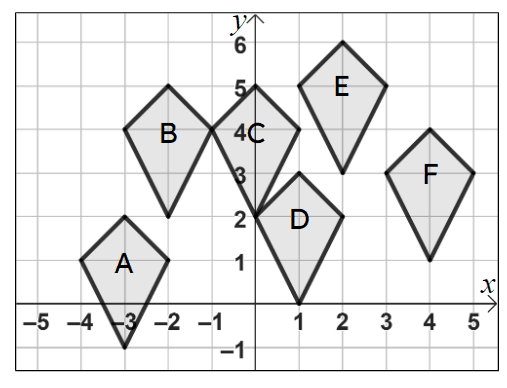
Q6.Match each line to its equation.
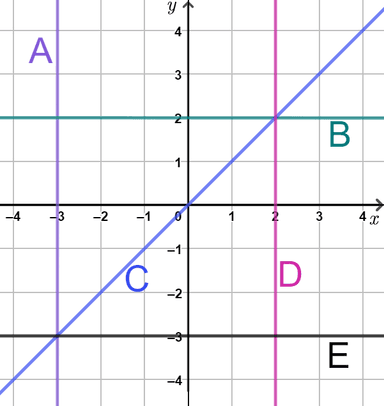
Line A -
$$x$$ = -3
Line B -
$$y$$ = 2
Line C -
$$y$$ = $$x$$
Line D -
$$x$$ = 2
Line E -
$$y$$ = -3
Assessment exit quiz
6 Questions
Q1.A reflection of a shape is the image of the shape.
Q2.Which of these diagrams show a reflection?

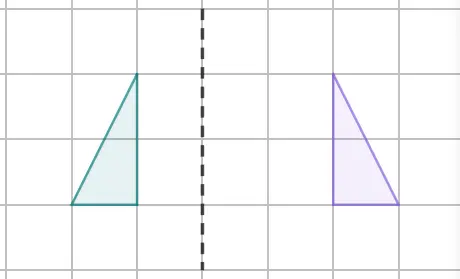
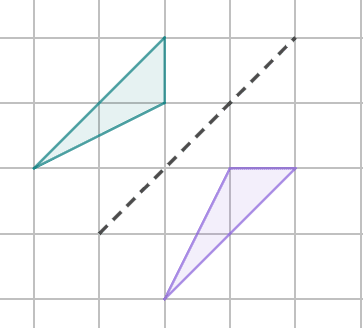
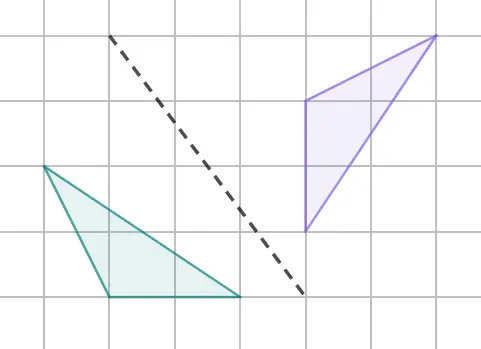
Q3.The line of reflection is Line .
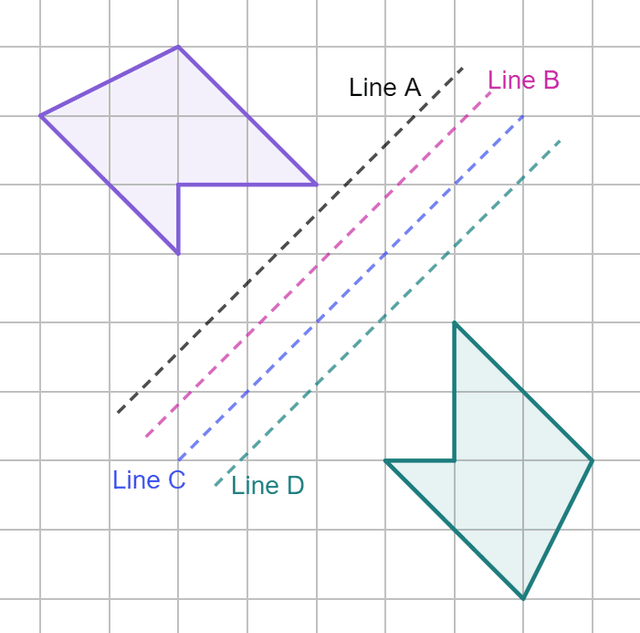
Q4.Shape A is reflected onto shape B. What is the equation of the line of reflection?
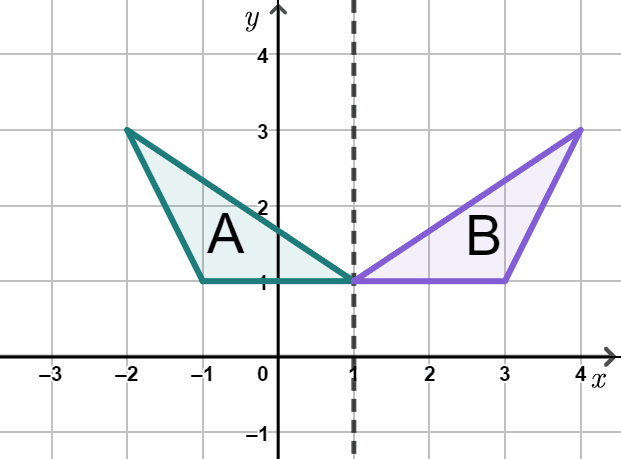
Q5.Describe this transformation fully.
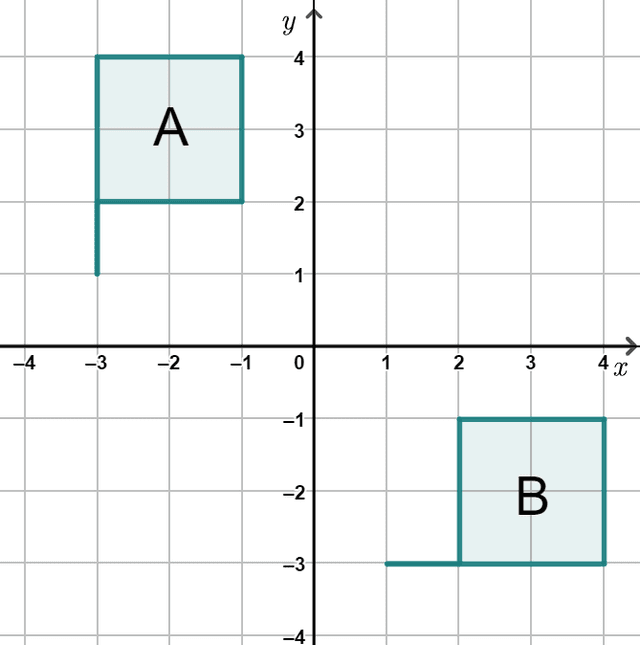
Q6.The point $$P$$ has coordinates $$(3, -2)$$. $$P$$ is reflected in different lines of reflection. Match the coordinates of the image of $$P$$ to the equation of the line of reflection.
$$P'(3, 2)$$ -
$$y = 0$$
$$P'(-3, -2)$$ -
$$x= 0$$
$$P'(-2, 3)$$ -
$$y=x$$
$$P'(2, -3)$$ -
$$y=-x$$

